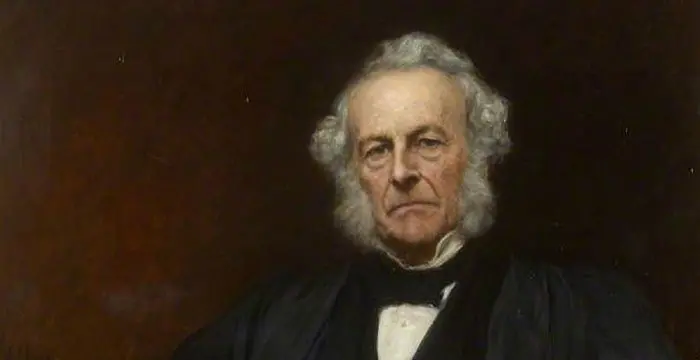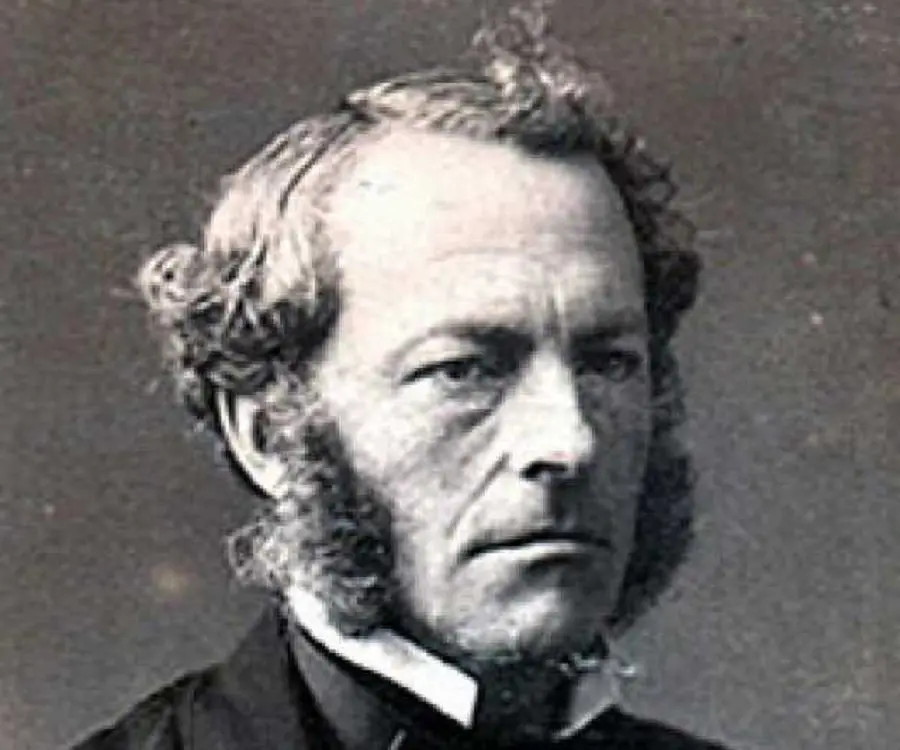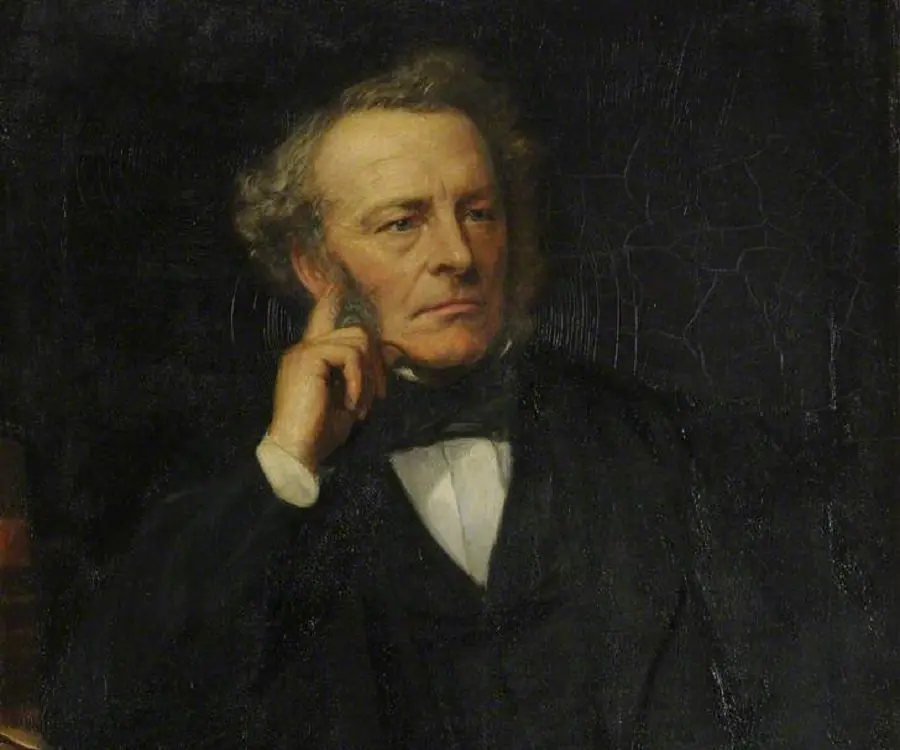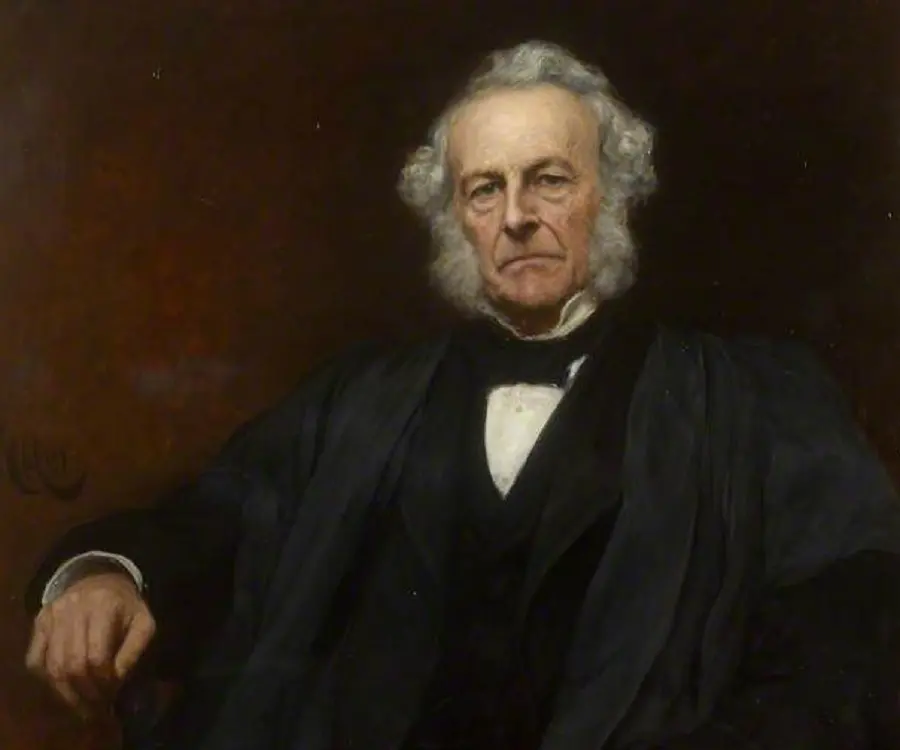
Sir George Stokes, 1st Baronet - Mathematicians, Career and Childhood
Sir George Stokes, 1st Baronet's Personal Details
Sir George Stokes was an Irish mathematician and physicist, well known for his investigations in fluid dynamics
| Information | Detail |
|---|---|
| Birthday | August 13, 1819 |
| Died on | February 1, 1903 |
| Nationality | British |
| Famous | Scientists, Mathematicians, Physicists |
| Spouses | Mary Susanna Robinson |
| Childrens | Arthur, Isabella, Susanna, William and Dora |
| Universities |
|
| Birth Place | Skreen |
| Religion | Evangelicalism, Anglicanism |
| Gender | Male |
| Sun Sign | Leo |
| Born in | Skreen |
| Famous as | Mathematician |
| Died at Age | 83 |
// Famous Physicists
Henry Cavendish
Henry Cavendish was a theoretical chemist and physicist, renowned for discovery of hydrogen and calculation of the mass of earth. To know more about his childhood, profile, timeline and career read on
Walter Kohn
Nobel Laureate Walter Kohn was an Austrian-born American theoretical chemist and physicist. Check out this biography to know about his childhood, life, achievements, works & timeline.
Nikola Tesla
Nikola Tesla was a Serbian-American inventor, best known for his development of alternating current electrical systems. This biography of Nikola Tesla provides detailed information about his childhood, life, achievements, works & timeline.
Sir George Stokes, 1st Baronet's photo
Who is Sir George Stokes, 1st Baronet?
Sir George Gabriel Stokes, 1st Baronet, PRS was an Irish mathematician and physicist. He was noted for his studies on the behaviour of viscous fluids, particularly for his law of viscosity, which describes the motion of a solid sphere in a fluid, and for Stokes' theorem, a basic theorem of vector analysis. His seminal contributions to fluid dynamics, optics and mathematical physics also paved way for a lot of future scientific research and revelations. He graduated from the Pembroke College, Cambridge as a senior wrangler and first Smith's prizeman and was elected for a fellowship. He was a senior associate to James Clark Maxwell and Lord Kelvin and this trio played a major role in contributing to the popularity of the Cambridge school of mathematical physics during the mid-nineteenth century. He was elected as the Lucasian professor of mathematics at Cambridge, and he held this post till he died. He became the first man since Isaac Newton to hold the three positions of Lucasian professor, secretary and the president of the Royal Society, and the first man to hold them simultaneously
// Famous Scientists
Juliane Koepcke
Juliane Koepcke is a German-Peruvian biologist, who was the lone survivor among the 92 passengers and crew of the ill-fated LANSA Flight 508 that crashed in the Peruvian rainforest on 24 December 1971. Know more about her life in this biography.
Henry Cavendish
Henry Cavendish was a theoretical chemist and physicist, renowned for discovery of hydrogen and calculation of the mass of earth. To know more about his childhood, profile, timeline and career read on
Konstantin Tsiolkovsky
Konstantin Tsiolkovsky was a Russian rocket scientist and a pioneer of astronautics. This biography provides detailed information about his childhood, family, personal life, career, achievements, etc.
Childhood & Early Life
George Stokes was born on August 13, 1819 in Skreen, County Sligo, Ireland in an evangelical Protestant family. His father, Gabriel Stokes, was the rector of the parish of Skreen and his mother’s name was Elizabeth Haughton.
He was the youngest of six children. He had three brothers and two sisters. His brothers who went onto become priests later on.
He received his primary education through his father and a clerk in his father's parish. He left for Dublin in 1832 and attended the Reverend R H Wall's school in Hume Street for three years.
He moved to England in 1835 and enrolled at the University of Bristol where he won many mathematics prizes. The years at Bristol were important ones in preparing him for his studies at Cambridge.
He entered the Pembroke College, Cambridge, in 1837 and graduated four years later as a senior wrangler and the first Smith's prizeman. Upon graduation, the college gave him a Fellowship.
Career
In the early 1840s he published papers on the steady motion of incompressible fluids, equilibrium and motion of elastic solids and internal friction in a moving fluid and its effect on a pendulum.
He derived an expression, 'Strokes' Law', for the frictional force exerted on spherical objects with very small Reynolds numbers. The viscosity of any liquid can be calculated from the expression if the terminal velocity, size and density of the sphere and density of the liquid are known.
In-between 1845 and 1849 he published several papers on the aberration of light, bands in a spectrum and diffraction. He mentioned in a paper on the dynamical theory of diffraction that the plane of polarisation must be perpendicular to the direction of propagation.
He was involved in many railway accident investigations and said that the two main reasons for the collapsing of bridges were the extensive use of cast-iron and effects of wind loads on the bridge. Because of the observations he made on the Dee bridge disaster in May 1847, he was appointed a member of the subsequent Royal Commission.
He wrote a paper in 1849 about the varying values of gravity at the surface of the earth and one on the numerical calculation of a class of definite integrals and infinite series, in 1850.
His 1852 paper was about the change of wavelength of light and he postulated the fluorescence phenomena, under which certain materials have the power to convert invisible ultra-violet radiations into visible radiations of longer wavelength and this conversion was depicted by the Stokes shift.
In the same year, he presented a different paper on the composition and resolution of streams of polarized light, when passed through different sources and the next year he investigated the metallic reflections exhibited by some non-metallic substances.
In 1860 he worked on the intensity of light being reflected from, or transmitted through, a pile of plates. Two years later, he presented before the British Association a report on Double-Refraction, a phenomenon where certain crystals show different refractive indices along different axes.
In 1864, he dealt with the chemical identification of organic bodies by their optical properties and a little later he worked on the relation between the chemical composition and the optical properties of various glasses, in accordance with transparency and improvement of achromatic telescopes.
Major Works
Through his extensive research on fluid dynamics, he explained how ripples and waves in water subside, how clouds remain suspended in air and the minimum required skin resistance for ships.
He gave 'Stokes' Law', which is used to determine the frictional force on spherical objects with low Reynolds number. The expression can be used to calculate the viscosity of any fluid.
Awards & Achievements
In 1849 Stokes was appointed to the Lucasian professorship of mathematics at Cambridge. He held the position till his demise in 1903.
The Royal Society presented him with the Rumford Medal in 1852 for his work on the wavelength of light and with the Copley Medal in 1893.
Queen Victoria made him Baronet Stokes of Lensfield Cottage in the Baronetage of the UK in 1889. The title became extinct in 1916.
Personal Life & Legacy
George Stokes married Mary Susanna Robinson on July 4, 1857 at St Patrick's Cathedral in Armagh. The couple had five children, namely, Arthur, Susanna, Isabella, William and Dora.
His daughters Susanna Elizabeth and Dora Susanna died in infancy, while his son Dr William G Gabriel committed suicide when he was 30. Another son, Arthur became a baronet and his daughter Isabelle Lucy contributed to her father's personal memoir.
He died on February 1, 1903 at Cambridge and was buried in the Mill Road cemetery.
// Famous Mathematicians
Grigori Perelman
Grigori Perelman is a Russian mathematician who is best known for his contributions to Riemannian geometry and geometric topology. Check out this biography to know about his childhood, family life, achievements and fun facts about him.
Terence Tao
Terence Tao is an Australian- American mathematician who has contributed enormously to the field of mathematics. Check out this biography to know about his childhood, family life and achievements.
Isaac Newton
Isaac Newton was an English scientist and mathematician, who discovered gravitation and Newtonian Mechanics. Read this biography to find more on his life.
Sir George Stokes, 1st Baronet's awards
| Year | Name | Award |
|---|---|---|
Other | ||
| 0 | 1893 - Copley Medal | |
| 0 | 1852 - Rumford Medal | |
Sir George Stokes, 1st Baronet biography timelines
- // 13th Aug 1819George Stokes was born on August 13, 1819 in Skreen, County Sligo, Ireland in an evangelical Protestant family. His father, Gabriel Stokes, was the rector of the parish of Skreen and his mother’s name was Elizabeth Haughton.
- // 1832He received his primary education through his father and a clerk in his father's parish. He left for Dublin in 1832 and attended the Reverend R H Wall's school in Hume Street for three years.
- // 1835He moved to England in 1835 and enrolled at the University of Bristol where he won many mathematics prizes. The years at Bristol were important ones in preparing him for his studies at Cambridge.
- // 1837He entered the Pembroke College, Cambridge, in 1837 and graduated four years later as a senior wrangler and the first Smith's prizeman. Upon graduation, the college gave him a Fellowship.
- // 1845 To 1849In-between 1845 and 1849 he published several papers on the aberration of light, bands in a spectrum and diffraction. He mentioned in a paper on the dynamical theory of diffraction that the plane of polarisation must be perpendicular to the direction of propagation.
- // May 1847He was involved in many railway accident investigations and said that the two main reasons for the collapsing of bridges were the extensive use of cast-iron and effects of wind loads on the bridge. Because of the observations he made on the Dee bridge disaster in May 1847, he was appointed a member of the subsequent Royal Commission.
- // 1849 To 1850He wrote a paper in 1849 about the varying values of gravity at the surface of the earth and one on the numerical calculation of a class of definite integrals and infinite series, in 1850.
- // 1849 To 1903In 1849 Stokes was appointed to the Lucasian professorship of mathematics at Cambridge. He held the position till his demise in 1903.
- // 1852His 1852 paper was about the change of wavelength of light and he postulated the fluorescence phenomena, under which certain materials have the power to convert invisible ultra-violet radiations into visible radiations of longer wavelength and this conversion was depicted by the Stokes shift.
- // 1852 To 1893The Royal Society presented him with the Rumford Medal in 1852 for his work on the wavelength of light and with the Copley Medal in 1893.
- // 4th Jul 1857George Stokes married Mary Susanna Robinson on July 4, 1857 at St Patrick's Cathedral in Armagh. The couple had five children, namely, Arthur, Susanna, Isabella, William and Dora.
- // 1860In 1860 he worked on the intensity of light being reflected from, or transmitted through, a pile of plates. Two years later, he presented before the British Association a report on Double-Refraction, a phenomenon where certain crystals show different refractive indices along different axes.
- // 1864In 1864, he dealt with the chemical identification of organic bodies by their optical properties and a little later he worked on the relation between the chemical composition and the optical properties of various glasses, in accordance with transparency and improvement of achromatic telescopes.
- // 1889 To 1916Queen Victoria made him Baronet Stokes of Lensfield Cottage in the Baronetage of the UK in 1889. The title became extinct in 1916.
- // 1st Feb 1903He died on February 1, 1903 at Cambridge and was buried in the Mill Road cemetery.
// Famous Leo Celebrities peoples
Eugenia Cooney
Check out all that you wanted to know about Eugenia Cooney, the famous American Vlogger & YouTube Personality; her birthday, her family and personal life, her boyfriends, fun trivia facts and more.
Princess D
Princess D (Destiny Indira Cox) is an American rapper, dancer and social media personality. Let’s have a look at her family and personal life including age, birthday, net worth, and fun facts.
Payton Moormeier
Payton Moormeier is an American social-media personality best known for his musical.ly videos. Check out this family, personal life, etc.
Grian
Grian is an English YouTube gamer and social media influencer. Check out this biography to know about his birthday, childhood, family life, achievements and fun facts about him.
Emmi Butler
Emmi Butler is an American YouTuber and social media star. Let’s take a look at her family and personal life including age, date of birth, net worth, and fun facts.
Erica Delsman
Erica Delsman is an American Musical.ly Star and social media personality. Let’s take a look at her family & personal life including age, date of birth, net worth, and fun facts.
Sir George Stokes, 1st Baronet's FAQ
What is Sir George Stokes, 1st Baronet birthday?
Sir George Stokes, 1st Baronet was born at 1819-08-13
When was Sir George Stokes, 1st Baronet died?
Sir George Stokes, 1st Baronet was died at 1903-02-01
Where was Sir George Stokes, 1st Baronet died?
Sir George Stokes, 1st Baronet was died in Cambridge
Which age was Sir George Stokes, 1st Baronet died?
Sir George Stokes, 1st Baronet was died at age 83
Where is Sir George Stokes, 1st Baronet's birth place?
Sir George Stokes, 1st Baronet was born in Skreen
What is Sir George Stokes, 1st Baronet nationalities?
Sir George Stokes, 1st Baronet's nationalities is British
Who is Sir George Stokes, 1st Baronet spouses?
Sir George Stokes, 1st Baronet's spouses is Mary Susanna Robinson
Who is Sir George Stokes, 1st Baronet childrens?
Sir George Stokes, 1st Baronet's childrens is Arthur, Isabella, Susanna, William and Dora
What was Sir George Stokes, 1st Baronet universities?
Sir George Stokes, 1st Baronet studied at University of Cambridge, Pembroke College, Cambridge
What is Sir George Stokes, 1st Baronet's religion?
Sir George Stokes, 1st Baronet's religion is Evangelicalism, Anglicanism
What is Sir George Stokes, 1st Baronet's sun sign?
Sir George Stokes, 1st Baronet is Leo
How famous is Sir George Stokes, 1st Baronet?
Sir George Stokes, 1st Baronet is famouse as Mathematician
















